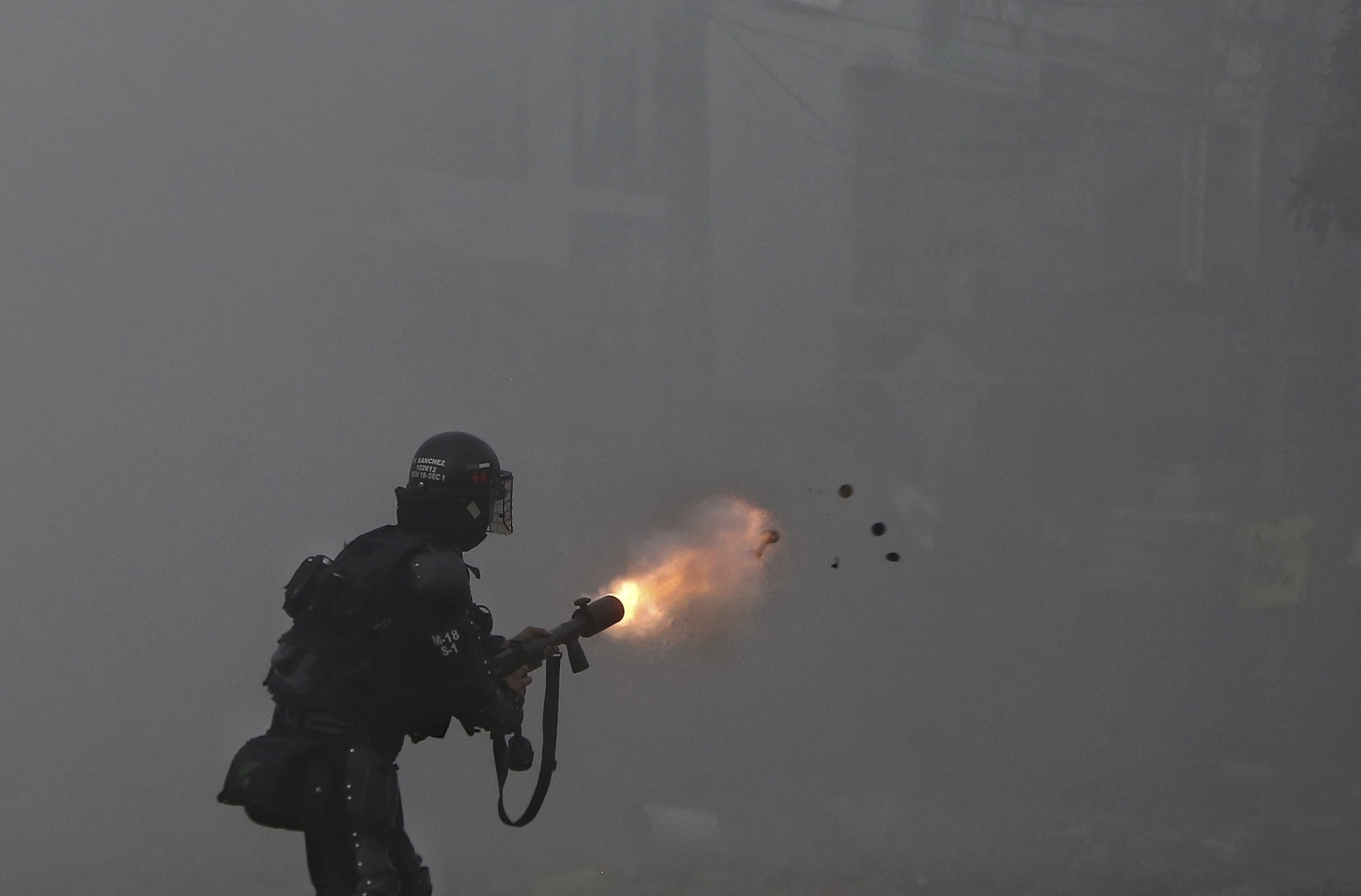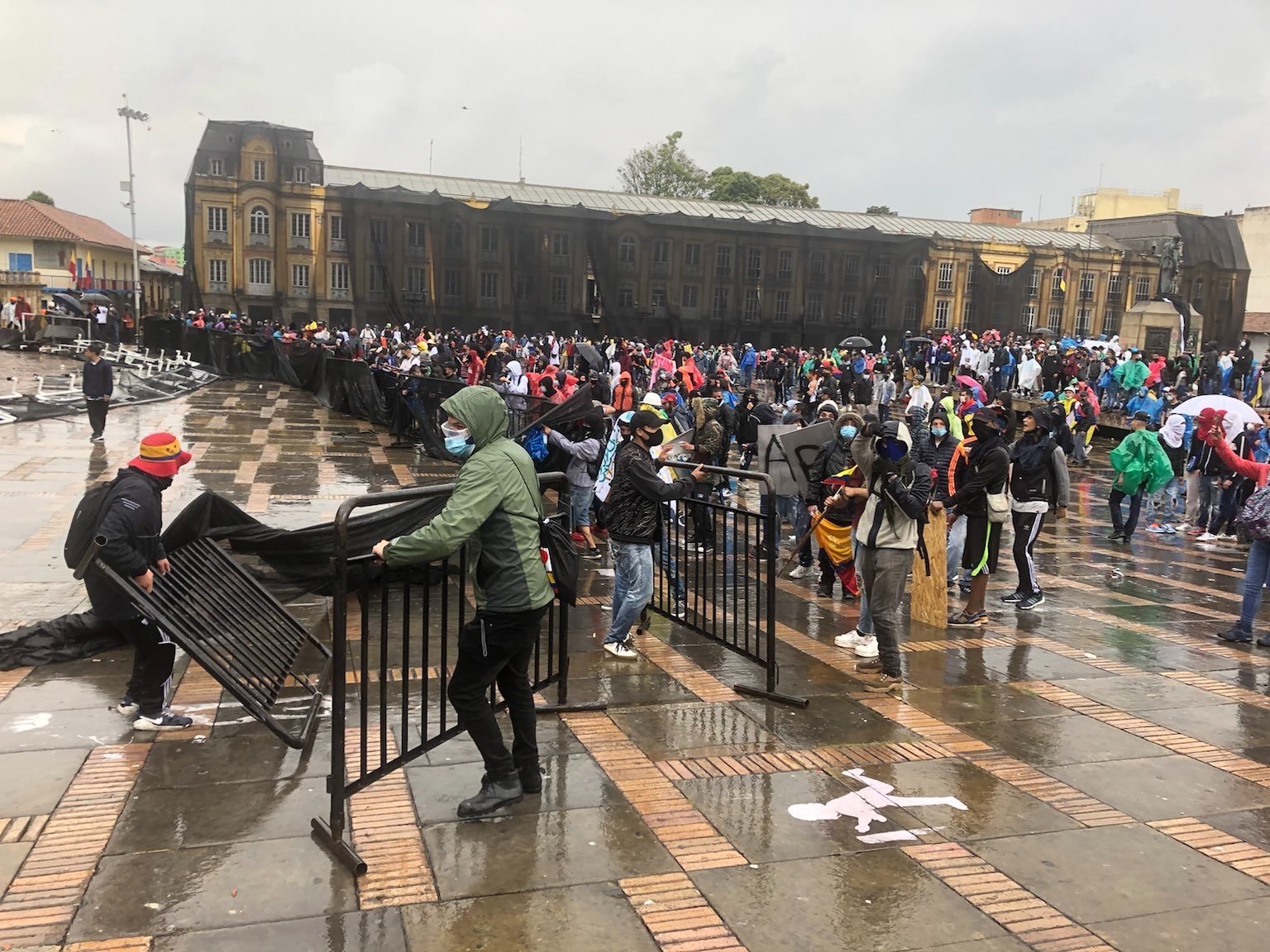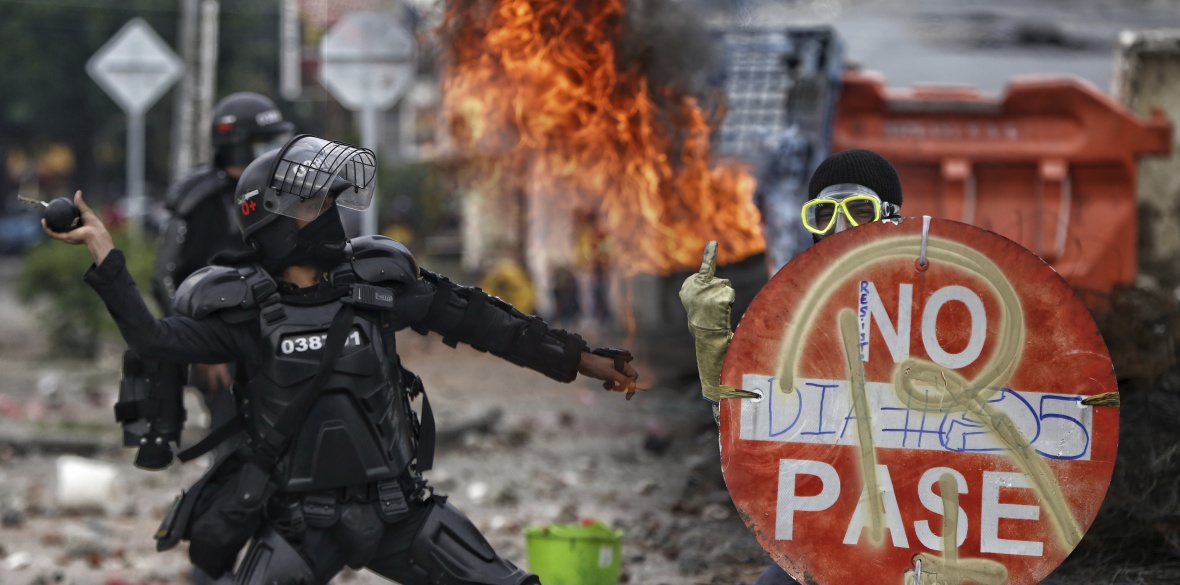This is the last article you can read this month
You can read more article this month
You can read more articles this month
Sorry your limit is up for this month
Reset on:
Please help support the Morning Star by subscribing here
ON APRIL 28 millions of Colombians answered calls to take to the streets to oppose tax reforms proposed by Ivan Duque’s right-wing government.
The National Strike Committee, a coalition of unions, farmers’ associations and student groups formed in 2019 to channel growing working-class unrest, led the charge.
Taking place in more than 500 cities throughout Colombia, the mobilisation began in opposition to the “reforma tributario” which imposes higher income taxes on workers and a regressive 19 per cent VAT on basic essentials like petrol, electricity, water and internet connection.
Through the tax reform, Colombia’s right-wing government has been trying to exploit Covid-19 as a pretext to make ordinary people pay for the crisis, a fact which drew wide condemnation from working-class sectors, even those not immediately affected by the proposed tax reforms, such as some students and peasants.
By the time the national mobilisation started, Colombia’s state had already prepared the armed forces.
Supported by US-intelligence technology, a leaked military document reveals that the labour movement was systematically targeted by the armed forces in the lead-up to the first national demonstration.
The contents of the document highlight the extent to which Colombia can be described as a police state.
Trade unions, student federations and peasant leagues — civilian entities found across the whole of Colombia’s territory — have been targeted with infiltration and sabotage.
The military even spied on and sought to infiltrate foreign groups, small labour unions and tiny student groups based in specific universities. Many civilians were imprisoned before the demonstrations even began, enabled by a reactionary “national security” law.
It was in this context that the situation turned violent.
Trained in counter-insurgency tactics by the likes of the US, Britain and Israel, Colombia’s police have made widespread use of rubber bullets that can kill, concussion grenades and conventional deadly weapons — handguns and rifles.

Police have been filmed using live ammunition against demonstrators and they continue to systematically use tear gas — a chemical weapon impossible to deploy with accuracy that causes suffocation, banned in armed conflict by the Geneva Convention in 1925 and more recently by the UN’s Chemical Weapons Convention in 1993.
Thousands of protesters, bystanders and journalists have been wounded by rubber bullets, baton charges and in some cases live fire. I was tear gassed and shot with a rubber bullet myself while filming a demonstration outside the National Congress building, but like many others, have not reported these injuries to the authorities due to the climate of fear.
Official figures do not reflect those hurt — or worse.
At the time of writing, 10 people have reported being sexually assaulted and raped by police. At least 30 have so far been killed by police but the true death toll is higher — dozens more have “disappeared.”
While the demonstrations began over tax reform, they soon developed into a broad-based working-class-led resistance movement against state terrorism, increasing inequality and poverty, as well as political corruption.
There is clearly an underlying social-class dynamic to the struggle on the streets, with workers and peasants joining the demonstrations in large numbers and Colombia’s corporate media and right-wing politicians condemning the protesters in luridly prejudicial language, calling them “terrorists” and “bandits.”
This takes place amid ongoing investigations into former president Alvaro Uribe’s part in supporting state terrorism and paramilitary death squads that killed and displaced hundreds of thousands in Colombia’s US-backed dirty war against Farc and ELN rebels. In a political gesture, the government recently released him from house arrest.
Ruling from 2002-2010, Uribe remains an enduring icon of the extreme right, with great influence and support among the wealthiest sectors. He took to Twitter on May 2 to call for blood: “Let’s support the right of soldiers and police to use their firearms to defend their integrity and to defend people and property from criminal acts of terrorist vandalism.”
Twitter hid the tweet for “glorifying violence” but sure enough, soon the armed forces, including tanks and helicopters, were called up to support the police — in a context where civilian deaths and injuries far outnumber police casualties.
So far only one police officer has died and a quick glance at video footage of the demonstrations shows that the police have an almost total monopoly on the use of force.

It is not because of an existing level of violence from the protesters that the army has been called in, but the potential of what this movement might become: the size, spread and popularity of the protests is what the government fears.
The determination is so strong that many return the next day with injured limbs, struggling to walk, but still working their way to the front lines to be attacked with rubber bullets and tear gas once more.
Every evening those too vulnerable to join the demonstrators declare their solidarity from their windows, banging their pots and pans.
It was this tireless resistance across the country, international pressure, combined with fear that the instability was making investors anxious, that eventually compelled Colombia’s president to announce on May 2 that the tax reform “in its current formation” was being withdrawn and would be “reworked.”
Despite these attempts to pacify the streets, the president’s words were too little, too late. The resistance had become about much more than a tax reform. After a century of state terrorism, Colombians were fighting back.
On international workers day, all the way through the night, thousands continued to resist in Colombia’s capital city Bogota. From my apartment I could hear the explosion of grenades and the ominous sound of homes being raided.
On May 5 there was a second national strike, and one trade union leader who cannot be named for security reasons said to me: “These demonstrations will continue — there is no programme or schedule.”
Where the movement goes next is unclear. The most common chant, simply “Resistencia, resistencia,” encapsulates the lack of co-ordination on the streets or immediate demands or goals.
After being constantly beaten back and abused by state forces, there is little likelihood this round of demonstrations will immediately bring about the deep social change desired.
The resistance lacks suitable national and regional co-ordination, as well as the means to defend themselves against an opponent that deploys the military in the first instance, ready to use a level of violence even the Washington Office in Latin America has called “disproportionate.”

Duque is now considering declaring a “state of internal commotion” which would allow him to enact additional restrictions on the media, limits on freedom of movement and extra powers to monitor communications.
However, social peace is unthinkable. Colombia is experiencing a wave of unrest emerging from the bottom half of society which began with the national strike on November 21, 2019 and has gathered pace ever since.
With the forced displacement of peasants caused by monopoly capitalism, alongside the return of coca fumigation — perhaps the only crop having prevented Colombia’s peasants from being exterminated as a social class over the years — the armed revolutionary movement in the countryside is also growing and is gradually recouping its lost strength following the 2016 peace agreement.
Latin America’s peculiarly repressive brand of neoliberalism seems unable to bend or adapt in order to de-escalate the class struggle. Its rigidity has led to a break in the social contract — and in light of the past year, perhaps permanently.
42.5 per cent of Colombians, post 2020, exist below the poverty line. Three-and-a-half million Colombians have fallen under the official poverty threshold in the past 12 months alone. And while the West gets ready to open their economies back up, Colombia is still heavily in the throes of the coronavirus.
According to official statistics, in a population of 50 million, there have been 2.93 million cases and 76,015 deaths and it is only now, in May 2021, that the nation has hit its highest peak. The health crisis perfectly mirrors the social crisis.

At this point, even an implausible, drastic reduction in state violence will not change the direction of travel. Colombia has the potential to have a strong and well-balanced economy that meets the needs of the masses of workers and peasants, but the country has also always been governed by a highly corrupt and ruthless oligarchy.
With the full support of US imperialism this oligarchy habitually resorts to incredible violence against the masses instead of reforming. It is not only unwilling but fundamentally unable to restructure society to meet the needs of the majority.
The next great upheaval is not a question of if, but when.
Oliver Dodd is a PhD candidate working on Colombia’s civil war and peace processes. He can be followed on Twitter @OliverCDodd.











